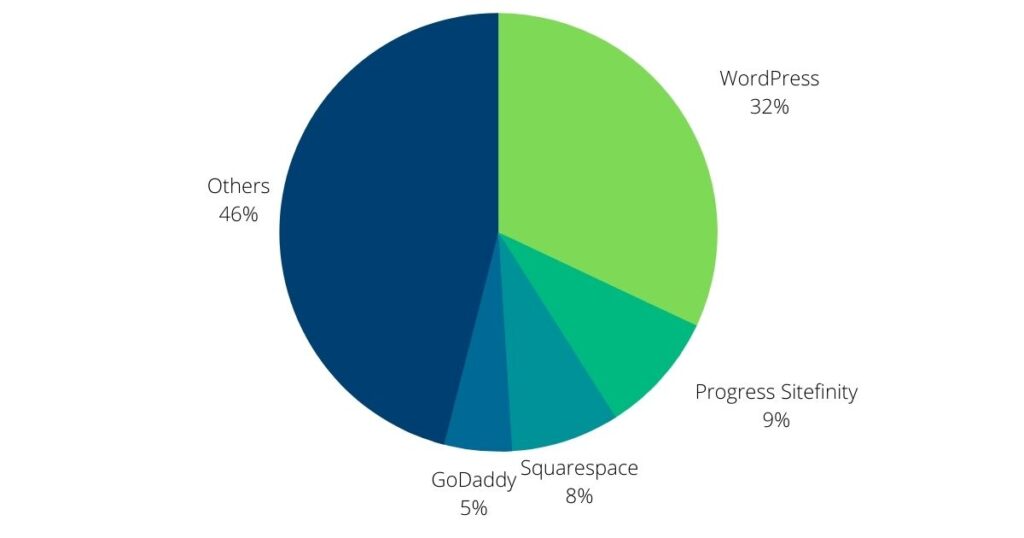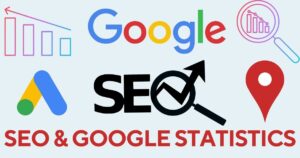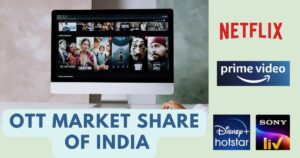What is Content Management System?
Content management systems (CMS) are software applications that allow you to create and manage the content on your website. This category comprises all systems that provide website content, including wikis, blog engines, forums, website editors etc. CMS platforms, on the other hand, aren’t exclusively for managing online content. There are several solutions available for managing files, videos, images, and digital assets, among other things.
There are between 1500 and 2000 content management systems available. According to a report, a custom-made CMS is used by 45 percent of websites. By 2026, the CMS market will be worth $125 billion. CMS is used by approximately 75 million websites on the internet around the world. However, not all of them implement the same content management system (CMS). Starting from 1980s, the CMS market has continued to expand over the previous four decades.
Specifically, the rate of growth has accelerated in the recent two decades. As a result, the CMS industry is both varied and competitive. WordPress is one of the most widely used content management systems, having the majority of the market share. Wix is one of the fastest-growing CMS, with a year-over-year growth rate of 149 percent.
Content Management System (CMS) Platforms in the US
The United States of America (USA) is one of the most developed economies in the world today. The country has witnessed an extraordinary growth in terms of the number of businesses and individuals building an online presence for their brand. Businesses from across industry verticals have come to understand that the internet could be the best place for them to reach out to customers, interact with them and positively affect their marketing decisions.
CMS platforms in the United States (US) are a godsend for these young businesses, allowing them to achieve a truly vibrant and dynamic online space that helps them engage and connect with their customers easily, even if they possess limited technical expertise or do not have access to a ready team of developers and programmers.
Even as they ride in on the digital wave that’s sweeping the nation, CMS platforms in the US have instigated an economic revolution. Entrepreneurs and small businesses with limited resources can now create and manage a website easily. This helps them more effectively exploit the far-reaching capabilities of the internet to not only market and sell their products, but also in long-term business development efforts.
United States’s Most Popular Content Management Systems in 2024
- WordPress
- Progress Sitefinity
- Squarespace
- GoDaddy Website Builder

1) WordPress
It is no surprise that the most widely used CMS platform in the world is also the most widely used choice in the US. It began as a subsidiary of b2/cafelog in 2003. The percentage of people and businesses using WordPress in the country stands at an impressive 32%. It is originally developed as a blogging software. WordPress is supposed to be simple enough for people who don’t know coding. Its interface is user-friendly, allowing users to customize the look of their site, install plugins, adjust URL settings, create blog articles.
WordPress is still a free, open-source project. It boasts the largest community of web designers, developers, and bloggers. It is one of the most expansive and customizable CMS platforms in the world and is the perfect web solution for requirements ranging from small personal websites to multi-level e-commerce platforms.
WordPress supports tons of plugins that can be used to add functionality and features to any website. Today, it has evolved into a sophisticated platform based on MySQL and PHP. Features like as customization, beginner-friendly, free plugins, and a large number of themes make WordPress as the most preferred CMS platform in the United States.
Its remarkable popularity ensures that there are tons of tutorials available online to guide you through the various stages of development, should you choose to do it yourself. There is also the added advantage of a vibrant and supportive community of users who will only be happy to help out with any issues you might run into during your development process. WordPress is mainly used by beginners and bloggers.
2) Progress Sitefinity
Sitefinity is a content management system for creating, storing, managing, and displaying content on your website. The content and pages here are multilingual, and you can manage numerous sites with shared content using a single Sitefinity CMS installation. Integration of complicated data and third-party technologies without creating issues. The percentage of people and businesses using Sitefinity in the country stands at 9%.
Progress Sitefinity is used by over 2,200 businesses to engage, convert, and maintain customers across the customer lifecycle. Progress Sitefinity helps businesses of all sizes engage their audiences with thoughtful, personalized experiences that boost conversions. The website’s extensibility allows it to accomplish practically anything.
Sitefinity is designed for mid- to large-sized businesses that need to quickly launch complex web projects across marketing and IT teams in an extremely effective, customizable, and constructive way. User-friendly front-end components enable simple website modifications.
The main advantage of Sitefinity CMS is without deploying code or recompiling the site, we can build and alter templates, content, and forms. Search, social sharing, image galleries, and other standard widgets are also available. Using custom content types, we can create dynamic pages using data from other systems while minimising development time and code deployments. Here, organizing pages on a website is very simple. Every year, many version updates are released.
3) Squarespace
Squarespace is one of the most well-known website builders. It has a significant market share in the global CMS business due to its extensive customization possibilities and business support. It is suggested for beginners. The main advantages of Squarespace are, without touching a single line of code, non-developers can construct and personalize a website. Also, you can see how your changes will look in real time as you make them, and it contains a template editor that you can easily drag and drop.
Squarespace is particularly popular among beginners who value the graphical component of a website since it provides attractive templates. A lot of eCommerce companies in the US use it to create online stores, as it supports eCommerce websites. The percentage of people and businesses using Squarespace in the US stands at 5%.
You can easily add and manage a blog to your site using Squarespace. You can construct landing pages for several blogs, use the block editor to create infinite blog entries, tag and classify posts, make post snippets, allow comments, and share your content on social media, among other things. Squarespace gives you complete control to optimize the title, meta description, image alt text tags and URL of your posts, which is critical for on-page SEO.
There is no free plan available on Squarespace. Its basic tier is $12 per month and includes a year’s worth of free custom domain.
4) GoDaddy Website Builder
GoDaddy Website Builder is one of the services offered by GoDaddy, was started in the late 90s. It is a simple, easy to use website builder with a lot of features that will appeal to both beginners and experienced users. GoDaddy Website Builder has a large number of users. It can be used to create anything from a simple business portfolio to a large eCommerce site. If you need to create a basic website without coding or investing in a complex infrastructure, GoDaddy Website Builder is a great option. The percentage of people and businesses using GoDaddy Website Builder in the United States stands at 5%.
GoDaddy Website Builder is considered as the most powerful site builder in the web hosting sector for its toolkit which is diverse. It puts greater emphasis on speed and convenience of use than on customization and innovative design.
GoDaddy Website Builder is manageable even for the beginners, regardless of your level of expertise or experience. With the help of this website builder, you can quickly and easily create a blog, an informative site, or even an online store.
The main features are within the website builder, GoDaddy presently provides 22 theme options. Every theme is mobile responsive. It even adds suitable images to your theme depending on the niche you choose. Using Click-to-add sections, the content blocks can be dragged and dropped into your pages and reorganize.
Free, Basic, Standard, Premium, and eCommerce are the five options offered by GoDaddy Website Builder. A 30-day free trial period is available, and after that there are only paid plans. The basic plan is $10 per month, whereas the Ecommerce plan is $25 per month. Choosing an Ecommerce plan allows you to create and edit product listings, manage discounts and offers, and set up flexible shipping and payment methods, among other things.
Source: Builtwith
Disclaimer: The data research report we present here is based on information found from various sources on the internet. We are not liable for any financial loss, errors, or damages of any kind that may result from the use of the information herein. We acknowledge that though we try to report accurately, we cannot verify the absolute facts of everything that has been represented.








